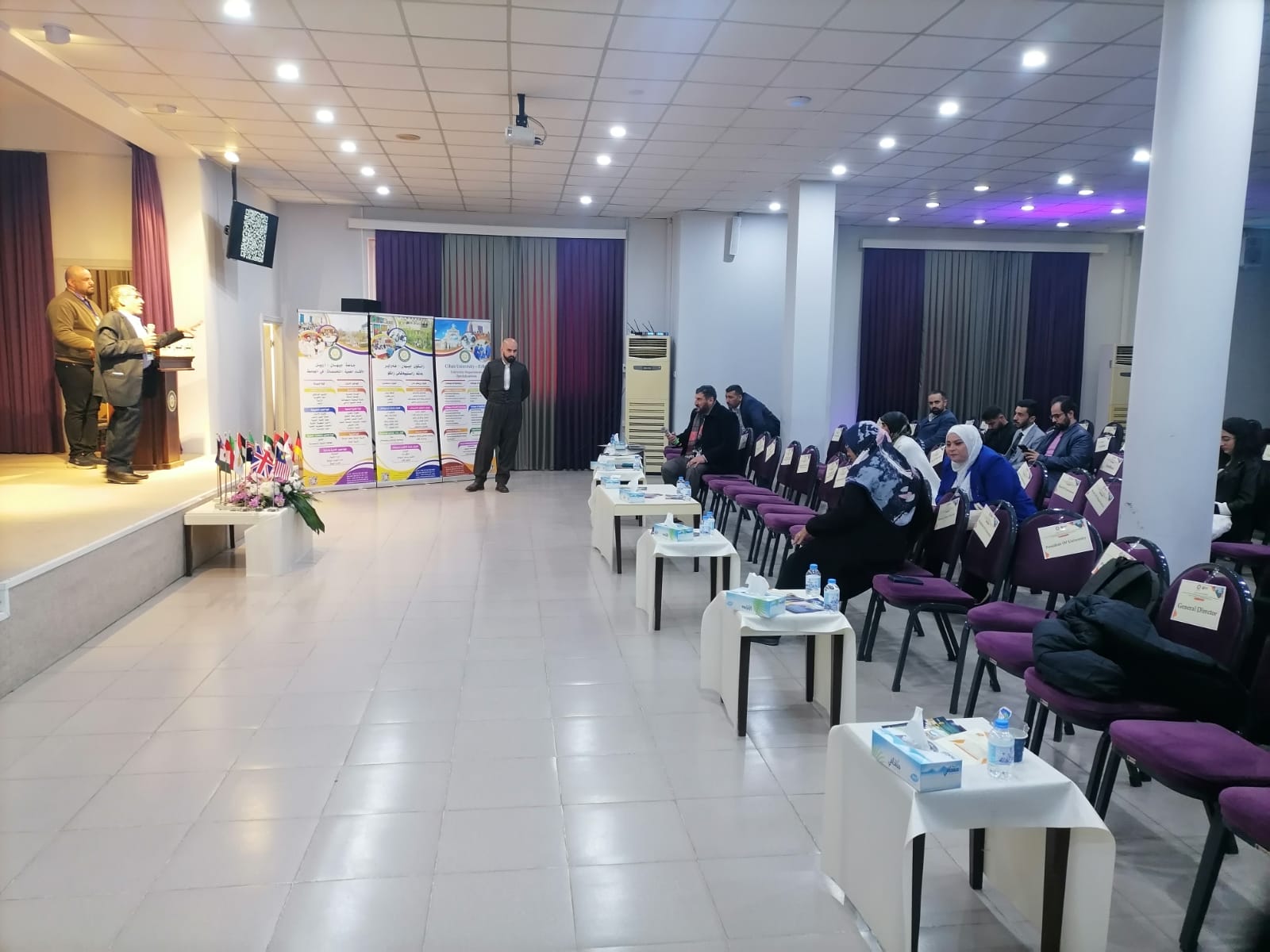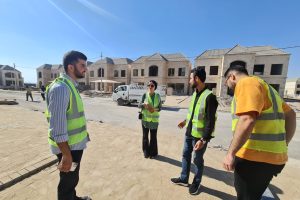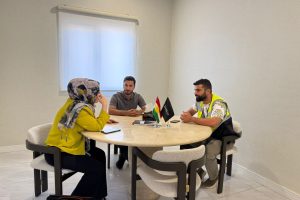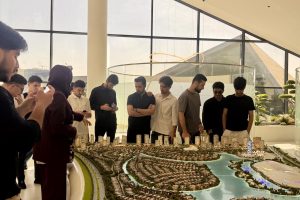The 5th International Conference on Architecture and Civil Engineering Sciences Hosts a Session on City Planning and Urban Design
On Thursday, February 27, 2025, Dr. Suhailah bint Abdul Rashid, the chair of the scientific session from University Putra Malaysia, opened the second session on City Planning and Urban Design. The session was chaired by Dr. Kazem Fares Damad Al-Issawi and Dr. Nagham Ismail Yahya, Below are the key research presentations:
Researcher Duha Hazem Ghanem from the University of Mosul presented her study titled “Improving Campus Navigability: The Effect of Repeated Architectural and Non-Architectural Elements,” explaining that enhancing mobility on campus requires an integrated approach that combines architectural and non-architectural elements. By focusing on clear design, appropriate lighting, and modern technology, a more accessible and safer educational environment can be created.
Professor Annam Al-Bazzaz from the University of Baghdad then presented her research titled “Components of Architectural Language and Early Recovery for the Destroyed Old Mosul City,” where she considered architectural language to be a collection of elements and concepts that express the cultural and historical identity of the city. She pointed out that the old city of Mosul, which has been devastated, needs a reassessment of the damage to buildings and historical landmarks to prioritize reconstruction, using traditional building methods while integrating modern technologies to preserve architectural identity. She emphasized the importance of focusing on restoring historical landmarks to ensure that cultural identity is not lost.
Researcher Hussein Salman Abdullah from the University of Mosul presented his study titled “Sustainable Street Design Principles and Their Impact on Old Streets,” noting that sustainable street design aims to achieve a balance between environmental, social, and economic needs, contributing to improving the quality of life in urban areas. This design includes several key principles, such as enhancing the use of public spaces, allowing for social interaction, encouraging walking and cycling, and incorporating green spaces and trees into street design, which helps improve air quality and reduce temperatures. It also includes implementing systems for managing rainwater, such as permeable paving, which allows water to seep into the soil, reducing flooding, and designing streets to be inclusive, providing easy access for all groups, including those with disabilities.
Dr. Sazrinee Zainal Abidin from the Department of Architecture at University Putra Malaysia presented his research titled “Reviving Historical Identity and Modern Tourism: The Role of City Branding in Positioning Malacca as a Premier Heritage Destination.” He highlighted that Malacca is one of the important heritage destinations in the world, combining rich history and diverse culture. The city’s branding plays a key role in enhancing its status as a distinguished tourist destination. Therefore, it needs to improve its infrastructure and invest in developing tourism facilities with a focus on sustainable tourism that preserves cultural and environmental heritage, ensuring the long-term sustainability of tourist attractions.
Dr. Kadhim Faris Dhumad from the University of Baghdad then presented his research titled “Measuring Housing Competitiveness Indicators in Residential Investment,” emphasizing that competitive indicators in residential investment are essential tools for assessing real estate market performance and understanding the factors affecting the attractiveness of residential projects. Measuring these indicators includes several key aspects: market analysis, studying supply and demand in the residential market to identify investment opportunities; the quality of construction, which involves assessing quality standards in residential projects, including materials used, design, and the nature of the site, all of which help attract investors and buyers and play a significant role in determining property value. He also analyzed prices compared to competitors, contributing to the development of effective pricing strategies. Measuring competitive indicators in residential investment provides valuable insights for investors and developers, enabling them to make informed decisions that enhance the success of their projects and contribute to the overall development of the real estate market.
Researcher Lana Shahab Ahmed then presented her study titled “Visual Attention Software: A Novel Instrument for Analyzing Iconic Buildings,” explaining that visual attention software is an innovative tool designed to analyze how individuals interact with buildings. It uses advanced techniques to monitor and evaluate the areas of visual attention of viewers, helping to understand what elements attract their focus in buildings. The software can identify architectural components that influence general impressions, such as colors, shapes, and decorative details. This tool can be applied in various fields, including marketing, education, and urban planning, thereby enhancing the understanding of the impact of architectural design on society.
The attendees of the scientific session provided electronic evaluations for each of the research studies presented, and discussions were held regarding the research results and key recommendations made by the researchers throughout the different stages of their work. The session concluded with an interactive expert dialogue, where specialists and attendees exchanged forward-thinking insights, fostering academic collaboration and driving future innovations in engineering sustainability,





